Long Bean Gardening Tips are your ticket to a bountiful harvest right in your own backyard! Have you ever dreamed of snipping fresh, vibrant long beans straight from the vine for your stir-fries or salads? It’s more achievable than you think, and I’m here to guide you through the process with some easy-to-follow DIY tricks and hacks.
Long beans, also known as yardlong beans or asparagus beans, have a rich history, particularly in Asian cuisine. They’ve been cultivated for centuries and are a staple in many cultures, prized for their unique flavor and impressive length. Imagine bringing that same culinary tradition to your own table, knowing you grew those delicious beans yourself!
But why should you bother with these long bean gardening tips? Well, for starters, growing your own food is incredibly rewarding. Plus, store-bought produce often lacks the freshness and flavor of homegrown vegetables. More importantly, knowing exactly what goes into your food – no harmful pesticides or mystery ingredients – gives you peace of mind. In this article, I’ll share my favorite DIY tricks to help you cultivate healthy, productive long bean plants, even if you’re a complete beginner. Get ready to roll up your sleeves and transform your garden into a long bean paradise!
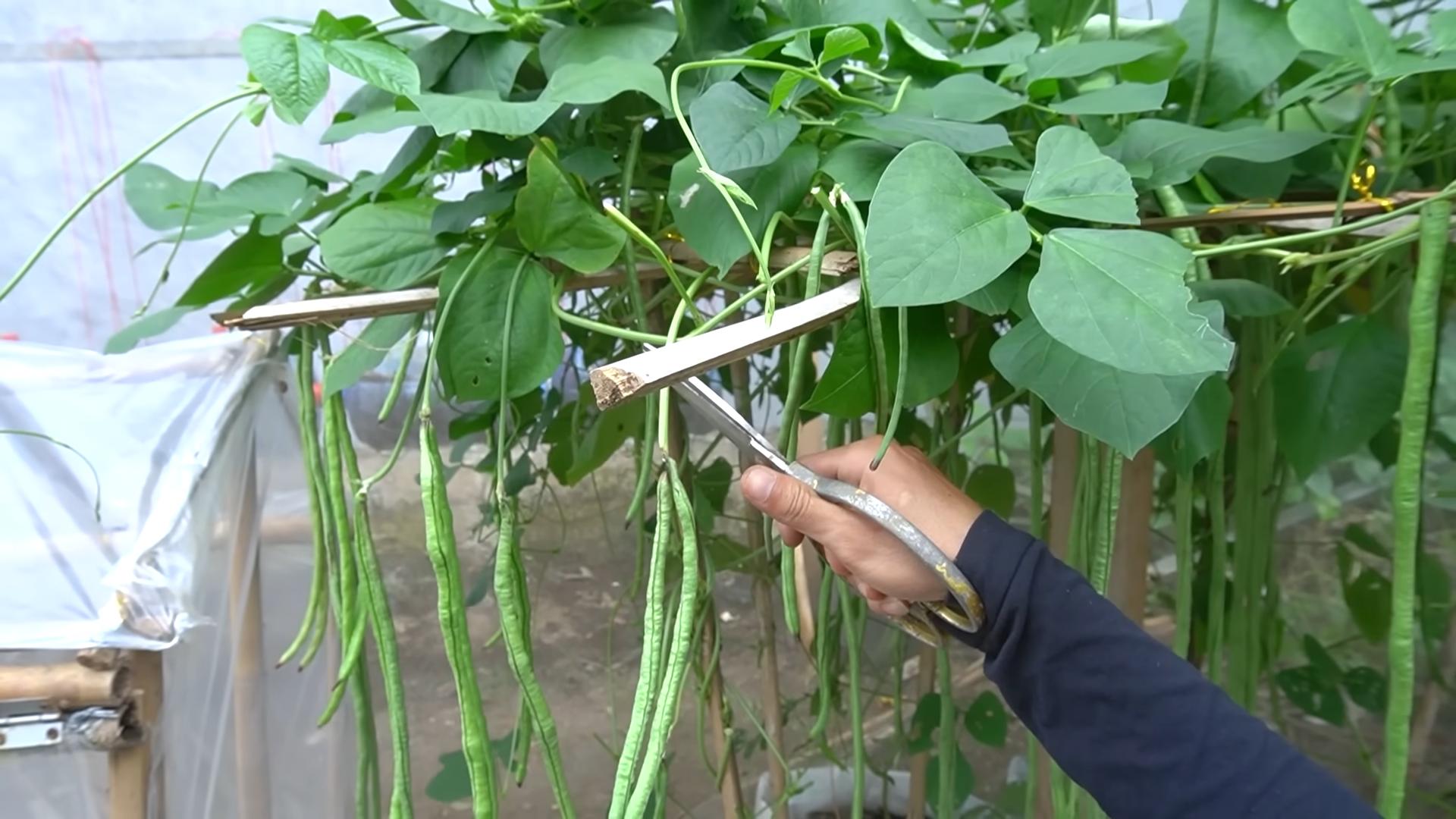
Grow Your Own Delicious Long Beans: A DIY Guide
Hey there, fellow gardening enthusiasts! I’m so excited to share my tried-and-true method for growing long beans (also known as yardlong beans or asparagus beans) right in your own backyard. These prolific climbers are not only visually stunning but also incredibly rewarding to harvest and cook with. Get ready to impress your friends and family with your homegrown bounty!
Choosing the Right Variety and Location
Before we dive into the nitty-gritty, let’s talk about selecting the perfect long bean variety and finding the ideal spot in your garden.
* Variety Selection: There are several long bean varieties available, each with slightly different characteristics. Some popular choices include ‘Red Noodle,’ ‘Chinese Red Noodle,’ ‘Orient Wonder,’ and ‘Yardlong.’ I personally love ‘Red Noodle’ for its vibrant color and excellent flavor. Consider your local climate and growing season when making your selection. Check with your local nursery for recommendations.
* Sunlight: Long beans are sun-worshippers! They need at least 6-8 hours of direct sunlight each day to thrive. Choose a location in your garden that receives plenty of sunshine.
* Soil: Well-draining soil is crucial for long bean success. They don’t like to sit in soggy soil, which can lead to root rot. Amend your soil with compost or other organic matter to improve drainage and fertility. A slightly acidic to neutral pH (around 6.0-7.0) is ideal.
* Support Structure: Long beans are climbers, so they need a sturdy support structure to grow on. This could be a trellis, fence, arbor, or even a teepee made of bamboo poles. I prefer using a trellis made of cattle panels because it’s strong and provides ample space for the beans to climb.
Preparing the Soil and Planting Seeds
Now that we’ve chosen our variety and location, it’s time to get our hands dirty and prepare the soil for planting.
1. Clear the Area: Remove any weeds, rocks, or debris from the planting area.
2. Amend the Soil: Dig in plenty of compost or other organic matter to improve soil drainage and fertility. I usually add a generous layer of compost, aged manure, and a handful of bone meal to provide essential nutrients.
3. Create a Planting Bed: Rake the soil smooth and create a slightly raised planting bed. This will further improve drainage.
4. Direct Sowing: Long beans are best direct-sown into the garden after the last frost. They don’t transplant well, so starting them indoors is generally not recommended.
5. Sowing Depth and Spacing: Sow the seeds about 1 inch deep and 4-6 inches apart. If you’re planting in rows, space the rows about 2-3 feet apart.
6. Water Gently: Water the soil gently after planting to keep it moist but not soggy.
7. Germination: Long bean seeds typically germinate in 7-14 days, depending on soil temperature and moisture levels.
Caring for Your Long Bean Plants
Once your long bean seedlings emerge, it’s important to provide them with the proper care to ensure healthy growth and abundant harvests.
* Watering: Water your long bean plants regularly, especially during dry spells. Aim to keep the soil consistently moist but not waterlogged. I usually water deeply once or twice a week, depending on the weather.
* Fertilizing: Long beans are heavy feeders, so they benefit from regular fertilization. I like to use a balanced organic fertilizer every 2-3 weeks. You can also side-dress with compost or aged manure. Avoid using fertilizers that are high in nitrogen, as this can promote excessive foliage growth at the expense of bean production.
* Weeding: Keep the area around your long bean plants free of weeds. Weeds compete with the beans for nutrients and water. I usually hand-weed regularly or use a layer of mulch to suppress weed growth.
* Training: As your long bean plants grow, you’ll need to train them to climb the support structure. Gently guide the vines up the trellis or fence, and tie them loosely with twine if necessary.
* Pest and Disease Control: Keep an eye out for common pests such as aphids, bean beetles, and spider mites. You can control these pests with insecticidal soap, neem oil, or by hand-picking them off the plants. Long beans are also susceptible to fungal diseases such as powdery mildew and rust. To prevent these diseases, ensure good air circulation around the plants and avoid overhead watering. If you notice any signs of disease, treat the plants with a fungicide.
Harvesting Your Long Beans
The most exciting part of growing long beans is, of course, harvesting them!
1. Harvest Time: Long beans are typically ready to harvest about 60-70 days after planting. The beans should be long and slender, but still tender. They should snap easily when bent.
2. Harvesting Technique: Use scissors or pruning shears to cut the beans from the vine. Be careful not to damage the plant.
3. Harvesting Frequency: Harvest your long beans regularly to encourage continued production. The more you harvest, the more beans the plant will produce. I usually harvest every 2-3 days during peak season.
4. Optimal Size: Harvest when the beans are about 12-18 inches long for the best flavor and texture. They can grow much longer, but they tend to become tough and stringy if left on the vine too long.
5. Storage: Freshly harvested long beans can be stored in the refrigerator for up to a week. For longer storage, you can blanch and freeze them.
Troubleshooting Common Problems
Even with the best care, you may encounter some problems while growing long beans. Here are a few common issues and how to address them:
* Poor Germination: If your long bean seeds are not germinating, make sure the soil is warm enough and consistently moist. You can also try soaking the seeds in water for 24 hours before planting to improve germination rates.
* Yellowing Leaves: Yellowing leaves can be a sign of nutrient deficiency, overwatering, or disease. Check the soil drainage and fertility, and treat any diseases as needed.
* Lack of Flowers: If your long bean plants are not flowering, it could be due to insufficient sunlight, excessive nitrogen fertilization, or stress from pests or diseases. Make sure the plants are getting enough sunlight, and adjust your fertilization practices accordingly.
* Bean Drop: Bean drop can occur if the plants are stressed by heat, drought, or poor pollination. Ensure the plants are adequately watered and protected from extreme temperatures. You can also try hand-pollinating the flowers to improve bean set.
Enjoying Your Harvest
Now that you’ve harvested your delicious long beans, it’s time to enjoy them! Long beans can be used in a variety of dishes, from stir-fries and salads to soups and stews. They have a slightly sweet and nutty flavor that pairs well with many different ingredients.
Here are a few of my favorite ways to prepare long beans:
* Stir-Fry: Stir-fry long beans with garlic, ginger, soy sauce, and your favorite vegetables.
* Salad: Blanch long beans and toss them with a vinaigrette dressing and other salad ingredients.
* Soup: Add long beans to soups and stews for extra flavor and nutrition.
* Grilled: Grill long beans with a drizzle of olive oil and a sprinkle of salt and pepper.
* Pickled: Pickle long beans for a tangy and flavorful condiment.
Growing long beans is a rewarding experience that will provide you with a bountiful harvest of delicious and nutritious vegetables. With a little bit of care and attention, you can enjoy fresh, homegrown long beans all season long. Happy gardening!
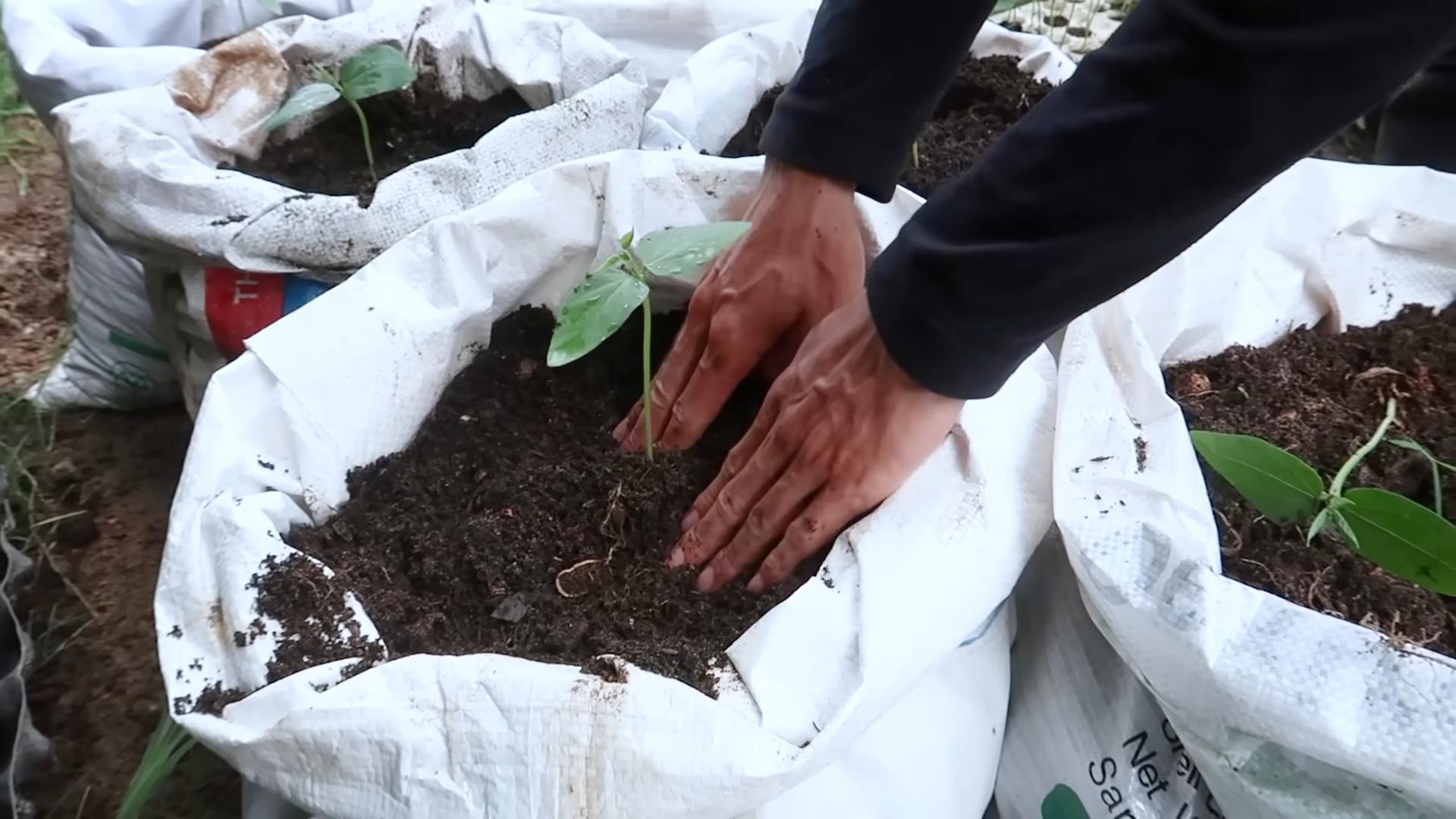
Conclusion
So, there you have it! Mastering the art of growing long beans doesn’t require a green thumb blessed by the gardening gods. It’s about understanding the plant’s needs, providing the right support, and being proactive in pest control. This DIY trick – creating a simple, yet effective trellis system using readily available materials – is a game-changer for anyone looking to maximize their long bean harvest.
Why is this a must-try? Because it’s efficient, cost-effective, and adaptable. Forget expensive, store-bought trellises that might not even fit your garden space. This method allows you to customize the height and width of your support system to perfectly suit your long bean plants and your garden’s layout. Plus, it’s incredibly satisfying to build something with your own hands that directly contributes to a bountiful harvest.
Beyond the basic trellis, feel free to experiment! Consider using bamboo poles for a more rustic look, or try weaving twine in different patterns for added support and visual appeal. If you’re growing long beans in containers, a smaller, teepee-style trellis might be ideal. You could even incorporate companion planting at the base of your long beans, such as marigolds to deter pests or basil to improve flavor. The possibilities are endless!
Don’t be intimidated if you’re a beginner gardener. This DIY project is straightforward and forgiving. The most important thing is to provide your long beans with a sturdy structure to climb on, allowing them to reach their full potential. Imagine the satisfaction of harvesting armfuls of fresh, delicious long beans from your own backyard, all thanks to this simple yet effective technique.
We wholeheartedly encourage you to give this DIY long bean trellis trick a try. It’s a rewarding project that will not only improve your garden’s productivity but also enhance its aesthetic appeal. And most importantly, it will provide you with a steady supply of fresh, homegrown long beans for your culinary adventures.
Once you’ve built your trellis and started harvesting, we’d love to hear about your experience! Share your photos, tips, and variations in the comments below. Let’s build a community of long bean enthusiasts and learn from each other’s successes (and even the occasional mishap!). Happy gardening!
Frequently Asked Questions (FAQs)
What are the benefits of using a trellis for long beans?
Using a trellis for long beans offers several significant advantages. Firstly, it provides vertical support, allowing the plants to grow upwards instead of sprawling on the ground. This maximizes space utilization, especially in smaller gardens. Secondly, it improves air circulation around the plants, reducing the risk of fungal diseases. Thirdly, it makes harvesting easier, as the beans are more visible and accessible. Finally, it can enhance the overall aesthetic appeal of your garden. A well-constructed trellis covered in lush long bean vines is a beautiful sight.
What materials can I use to build a long bean trellis?
The beauty of this DIY project is its flexibility. You can use a variety of materials depending on what you have available and your personal preferences. Some common options include:
* **Bamboo poles:** These are a natural and sustainable choice, offering a rustic look.
* **Wooden stakes:** These are sturdy and readily available at most garden centers.
* **Metal pipes or rods:** These are durable and long-lasting, but may be more expensive.
* **Twine or rope:** Use this to create the climbing structure between the vertical supports. Natural fibers like jute or sisal are good options.
* **Reclaimed materials:** Get creative! You can repurpose old ladders, fencing, or even branches to create a unique trellis.
How tall should my long bean trellis be?
The ideal height of your long bean trellis depends on the variety of long bean you’re growing. Some varieties can reach lengths of 6-8 feet or even longer. As a general rule, aim for a trellis that is at least 6 feet tall. You can always trim the vines if they grow beyond the top of the trellis. It’s better to err on the side of being too tall than too short.
How far apart should I space the vertical supports of my trellis?
The spacing between the vertical supports will depend on the overall design of your trellis and the materials you’re using. A good rule of thumb is to space them 2-3 feet apart. This will provide adequate support for the long bean vines without overcrowding them. If you’re using thinner materials like bamboo poles, you may want to space them closer together for added stability.
How do I train the long bean vines to climb the trellis?
Long bean vines are naturally climbers, but they may need a little encouragement, especially when they’re young. Gently guide the vines towards the trellis and weave them through the twine or other climbing structure. You can use plant ties or clips to secure them in place if needed. As the plants grow, they will naturally cling to the trellis on their own.
What are some common pests and diseases that affect long beans, and how can I prevent them?
Long beans are susceptible to several pests and diseases, including aphids, bean beetles, powdery mildew, and fungal leaf spots. To prevent these problems, practice good garden hygiene. Remove any dead or diseased leaves promptly. Ensure good air circulation around the plants. Consider using organic pest control methods, such as insecticidal soap or neem oil. Companion planting with marigolds or basil can also help deter pests.
Can I grow long beans in containers?
Yes, you can successfully grow long beans in containers, but you’ll need to choose a large container (at least 12 inches in diameter) and provide adequate support. A smaller, teepee-style trellis is ideal for container gardening. Make sure the container has good drainage and use a high-quality potting mix. Water regularly and fertilize every few weeks.
How often should I water my long bean plants?
Long beans need consistent moisture, especially during hot, dry weather. Water deeply whenever the top inch of soil feels dry to the touch. Avoid overwatering, as this can lead to root rot. Mulching around the base of the plants can help retain moisture and suppress weeds.
When is the best time to harvest long beans?
Long beans are typically ready to harvest about 60-70 days after planting. Harvest them when they are young and tender, before the seeds inside become too large. The beans should be firm and snap easily when bent. Regular harvesting will encourage the plants to produce more beans.
What are some creative ways to use long beans in cooking?
Long beans are a versatile vegetable that can be used in a variety of dishes. They can be stir-fried, steamed, boiled, grilled, or added to soups and stews. They pair well with Asian flavors like soy sauce, ginger, and garlic. You can also use them in salads or as a side dish. Get creative and experiment with different recipes!

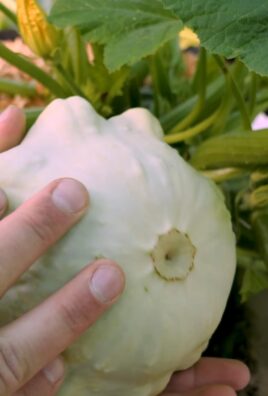
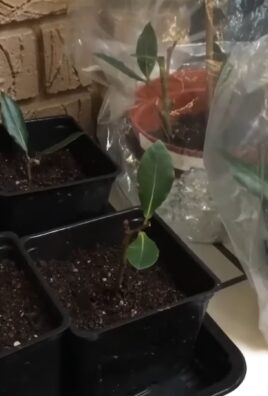
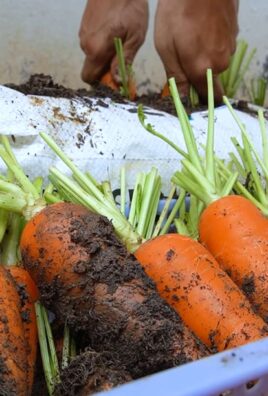
Leave a Comment